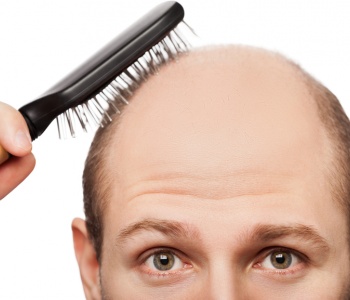Causes of Hairloss
Hair is a very important factor of appearance in men as well as women. Hair plays an important role in facial characteristics, and a carefully chosen, well-kept hairdo makes a person more pleasing and, as a result, more confident. Hair loss is a problem affecting both sexes.
THE DEVELOPMENT OF HAIR
During foetal development, hair follicles and hair bulbs develop by week 20 to 22. The total number of hair follicles on an adult body is 5 million. One million of these cover the head and 70 to 100 thousand can be found on the scalp.
The average number of hairs varies by hair colour: blondes have an average of 120 to 150 thousand while those with dark hair have 100 to 120 thousand. People with red hair have the least amount of hairs, approximately 70 to 100 thousand. However, a really blond hair is only 0.05 mm in diameter while a darker hair may be as thick as 0.2 mm.
TYPES OF HAIR
Hairs have two basic types: delicate, very light, almost imperceptable hair is called vellus, while the so called terminal hair (the type we commonly call hair) grows longer, is stronger and pigmented, i.e. coloured.
The two types of hair may turn into each other due to certain factors, such as hormonal changes. This occurs when balding starts, i.e. terminal hair turns into vellus hair, a process called miniaturisation or atrophy.
STRUCTURE OF HAIR
The main component of hair is a protein called creatine. Creatine accounts for 97 % of hair – the rest is water. The innermost part of a hair is the medulla, followed by the cortex, and finally the cuticula.
GROWTH OF HAIR
Hair is the most quickly growing tissue. The average growth rate is 1 cm per month, amounting to 0.33 mm per day and 12 cm per year. Growth occurs in cycles. The three basic stages of growth are the anagenic, catagenic and thelogenic phases.
HAIR LOSS – CAUSES AND EXPLANATIONS
The loss of 100 to 150 hairs daily is considered as normal – this is the natural replacement process. As long as the follicular units are healthy and intact, there is nothing to worry about. If, however, the daily loss exceeds 150 hairs, there must be an underlying condition that needs to be treated.
Hair loss can be transient or long-term. Transient hair loss is easy to treat, if the causes are recognised. Hair loss exceeding the normal rate indicates an abnormal process going on in the body. Hair loss may be caused by hormonal imbalance, diseases or external factors like drugs or poisons.
CAUSES OF HAIR LOSS

Most causes of hair loss, thinning or balding are due to genetic factors leading to hereditary disposition to male or female type of baldness. Dietary and lifestyle factors may also contribute, but the combined effect of several underlying conditions can also result in hair loss. Thinning of the hair can be a symptom of a short-term process, such as stress, pregnancy or the side-effect of a medicine – in such cases hair will regrow.
The various hormones, drugs and diseases can themselves change the growth and condition of hair, leading to hair loss. If the causes are diagnosed and treatment is provided, the hair regains its normal growth and replacement potential. Hair loss may be caused by quite simple factors, like inflammation or an allergenic drug ingredient.
ANDROGENIC HAIR LOSS, OR AGA
Androgenic hair loss, i.e. the type due to hormonal factors, commonly known as male baldness, is responsible for 90 to 95 % of all cases of hair loss in men.
FEMALE HAIR LOSS
Women do not usually grow bald – they tend to suffer from diffuse hair loss affecting the whole head.















